Celery
- Scientific Name: Apium graveolens var. dulce
- Plant Family: Umbelliferae
- Parts Used: Leaves, Stalks, Seeds, Roots
- Actions: Digestive, Stimulant, Diuretic, Anti-rheumatic, Carminative, Sedative, Aromatic
This is the cultivated celery, introduced into Britain in the late 17th century from Italy, replacing as a potherb the acrid little wild celery, known as “smallage,” that grows in salt marshes and river estuaries in Britain and Europe.
Some people use celery on the skin to repel mosquitoes. Some people also take celery by mouth for conditions such as menstrual cramps, prediabetes. Unblanched celery is rich in vitamins and mineral salts. It is a digestive and stimulant with a reputation for lowering blood pressure.
Celery seeds find their main use in the treatment of rheumatism, arthritis, and gout. They are especially useful in rheumatoid arthritis where there is an associated mental depression. Their diuretic action is obviously involved in rheumatic conditions, but they are also used as a urinary antiseptic, largely because of the volatile oil apiol.
Appearance
The leaves are smooth, shining, yellow-green and feathery, and the fleshy ridged stem is a bright green unless blanched pale. It is a biennial, umbels of white flowers appearing in late summer during the second year, followed by dark, ridged seeds.
Habitat and Cultivation
Celery thrives in cool, mild climates and requires high levels of moisture. Growing to a height of 15-24 inches, celery has long, fibrous petioles formed by conically arranged stalks joined at the base that surround the heart of the celery plant. The stalks each produce three to five bright green, pinnate leaves at the tip of the stalk.
Celery’s small white or yellow flowers appear in umbels from January to August during the plant’s second year of growth. The celery fruits, or schizocarps, consist of two united carpels (mericarps), each containing a brown, ridged, ovoid-shaped, very small seed, approximately 1.3 mm in length. These fruits, known in commerce as “celery seed,” have a floral odor and slightly pungent taste, and typically ripen in August and September.
Celery is cultivated worldwide. Celery’s Latin binomial, Apium graveolens, translates to “strongly smelling” and alludes to celery’s aromatic compounds.
Cultivated celery has been bred for its elongated, thick, fleshy, ribbed, milder-tasting stalks, while wild celery is grown for its bitter leaves. By the early 19th century, four varieties of celery were cultivated in the United States, where the plant gained popularity as a salad vegetable.
Three varieties of celery are the most commonly cultivated:
- Chinese celery (var. secalinum), which is used sparingly as a condiment due to its strong, bitter taste.
- Stalk celery (var. dulce), which is eaten raw in salads or cooked.
- Celeriac or “turnip-rooted celery” (var. rapaceum), which is grown for its enlarged root. Celeriac is popular in European cuisine and its seeds also are used for making commercial celery salt.
Medicinal Uses
Cooling thermal nature; sweet and bitter flavor, Celery benefits the stomach and spleen-pancreas and calms an aggravated liver. It improves digestion, dries damp excesses, purifies the blood, reduces wind conditions such as vertigo and nervousness, and promotes sweating.
Also used for heat excesses such as eye inflammations, burning urine, blood in the urine, acne, and canker sores. It will cool internal heat in the liver and stomach, which often contributes to headaches and excessive appetite, among other maladies.
For appetite control, raw celery can be eaten between and during meals. To slow down and encourage more thorough chewing of food, eat celery with a meal.
Celery is one of the few vegetables that combines well with fruit, as it has an ability to dry damp conditions, including those associated with eating fruit and concentrated sweeteners.
Celery juice combined with a little lemon juice is a remedy for the common cold when fever is more prominent than chills. The combination is helpful in headaches caused by high blood pressure or by heat conditions (red face, head feels hot, red tongue, and/or irritability).
Celery juice alone or in combination with lemon is useful for diabetes and helps clear the acidosis commonly caused by diabetes. For this purpose, drink 2 to 4 cups of the juice daily.
Very high in silicon, celery helps renew joints, bones, arteries, and all connective tissues. Because of these effects and the capacity of celery to clear digestive fermentation (dampness) and acidic blood that frequently accompany tissue inflammations, it is useful in the treatment of rheumatism, arthritis, gout, and nerve inflammations.
Both the stalks and roots are used in the East and West to treat high blood pressure and are a safe remedy for high blood pressure during pregnancy.
It is thought that the chemicals in celery can have many effects on the human body, including lowering blood pressure and blood sugar and causing sleepiness, but there is limited research to support these proposed effects. Chemicals in celery seem to reduce the ability of bacteria to cause urinary tract infections (UTIs).
Celery seeds, leaves, stem, and root are used in a variety of traditional medicine systems, including the Unani tradition of ancient Persia and Arabia, Indian Ayurveda, and Chinese herbal medicine. As an herbal preparation, celery seeds were consumed fresh or as a water decoction, or the seed powder or extracts were used.
The first century medical text, De Medicina, written by Roman encyclopedist Aulus Cornelius Celsus, listed the use of powdered celery seed pills for pain relief. Powdered celery seeds were blended with honey to create a paste used topically as a poultice for a variety of inflammatory conditions such as boils, rheumatoid arthritis, gout, sciatica, and backache.
In Unani medicine, the Arabs obtained knowledge of the use of tukhme karafs, or celery seeds, from Greek physicians including Dioscorides (first century CE) and Theophrastus (died 287 BCE).
The seeds of celery are rich in pungent, astringent volatile oils that are used in a variety of preparations, including teas/decoctions and pastes. Celery seeds are considered a heart tonic and used to lower blood pressure. Other indications include hepatic and spleen disorders, brain disorders, body pain, and sleep disturbances.
Celery seed decoctions commonly were used for breathing difficulties such as asthma, bronchitis, and pleurisy, and were considered effective for treating measles and all types of fevers. Celery seed decoctions also were used to help dissolve both kidney and bladder stones and were also indicated in cases of sexual debility or low libido.
However, celery seed was contraindicated in cases of venomous stings due to its ability to thin the blood and rapidly circulate the venom through the body.
In Ayurveda, the traditional medicine system of India, celery stalk juice was used for chronic lung congestion and weight loss as well as to stimulate poor appetite. The root, leaf, and seed are used in various preparations for purifying the blood, regulating digestion and bowel movements, calming the nerves, and curing gallstones and kidney stones.
Celery seed tea commonly is used to relieve indigestion, flatulence, and griping pains. Celery seed and root are considered to have laxative, digestion-enhancing, diuretic, uterine-stimulating, breastmilk-promoting, calming, stimulant, and tonic properties.
Celery root was used for its diuretic properties and as a remedy for colic. Celery root tinctures are used as a diuretic in hypertension and urinary disorders.
India’s Materia Medica lists celery as a diuretic, a litholitic (breaks urinary stones), an emmenagogue, and a carminative adjunct to purgatives. Celery is a preventative treatment for rheumatism and gout and is also indicated as an antispasmodic for treating bronchitis, asthma and chronic lung congestion, and as a blood-purifying alterative for chronic skin disorders such as psoriasis.
Similar to Unani traditional medicine, celery seed decoctions are used as an aphrodisiac to enhance libido and as a nervine to calm anxiety and insomnia. Celery seed extract is used similarly to improve kidney function and treat gout as well as bladder and urinary tract infections.
Celery, specifically Chinese celery (A. graveolens var. secalinum), was independently cultivated in China where it has been used as an important food and medicine since the fifth century. Celery is categorized as having a bitter taste and a cooling thermal nature and is used to relieve water retention and control high blood pressure.
Celery’s detoxifying phytochemicals reduce blood acidity or acidosis common with tissue inflammation associated with gout and diabetes. Mineral-rich celery stalk juice formulations are used as a dietary therapy to renew joints, connective tissue, arteries, and veins.
According to the German Commission E, celery is described as a natural diuretic and is noted for use for acidosis or “blood purification,” for regulating bowel movements, alleviating rheumatic complaints, gout, bladder or kidney stones, as well as for weight loss due to malnutrition, exhaustion, loss of appetite, and to calm nervousness.
However, the Commission E listed celery as an “Unapproved Herb” due to a lack of adequate scientific or clinical evidence to support such uses at the time the commission reviewed the pertinent literature on celery (1991).
Preparation and Dosage
- Infusion: Pour a cup of boiling water onto 1 to 2 teaspoons of freshly crushed seeds. Leave to infuse for 10 to 15 minutes. This should be drunk three times a day.
- Tincture: Take 2 to 4 ml of the tincture three times a day.
- Combinations: In rheumatic conditions the seeds combine well with Bogbean. Generally, they appear to work better in combination with Dandelion.
- Seed: The typical medicinal dose for celery seed is three to five grams.
For mosquito repellent: Applying a gel containing 5% to 25% celery extract to the skin, or applying a specific product containing celery extract 5%, along with vanillin, eucalyptus oil, orange oil, and citronella oil, has been used.
Celery Juice
Plain, fresh celery juice is one of the most powerful healing juices available to us. This clean, green drink is the very best way to start your day. Make this juice a part of your daily routine and soon you won’t want to go a day without it!”
- Thoroughly rinse one bunch of Celery.
- Run it through a juicer.
- Drink immediately for best results.
- Makes about 16 ounces of juice.
If you don’t have a juicer:
- Chop the celery.
- Blend it in a high-speed blender until smooth.
- Strain well.
Here’s what Anthony William has to say about Celery juice:
Don’t let the simplicity of humble celery mask its strength—it’s often the simplest of measures in life that gracefully work wonders in the most complex situations. I believe that celery juice is a miracle juice and that it’s one of the greatest healing tonics of all time. I’ve seen thousands of people who suffer from chronic and mystery illnesses restore their health by drinking sixteen ounces of celery juice daily on an empty stomach. That’s why, long ago, I started the movement of drinking pure, straight celery juice. Since my books came out sharing the benefits of celery juice even more widely, it’s become a global movement. I want to be sure people know how to use this potent drink correctly and successfully because its healing potential is that tremendous.
Celery juice is most powerful when you drink it solo. While it’s great to consume other green juices or vegetables juices and add in items like spinach, kale, parsley, cilantro, and apples, drink those mixed juices at a different time than your straight celery juice. These blends function differently than what I’m recommending as your greatest tool for recovering your health: pure celery juice taken on an empty stomach.
- Eating vs. Juicing Celery: The Difference
Eating celery stalks, while very healthy and important, is not the same as drinking pure celery juice. When celery is juiced, the pulp (fiber) is removed, and I believe its healing benefits become much more powerful, especially for someone with chronic illness. You’ll also be able to consume far more celery as juice than you would by eating it.
I believe that celery juice also increases and strengthens your bile. Strong bile is important for breaking down fats; it’s also needed to eliminate waste from your body. In Liver Rescue, I share hundreds of what I call Liver Troublemakers, which are the specific chemicals, pollutants, pathogens, foods, and more that contribute to a sluggish liver, causing a wide range of health problems that result in chronic illness.
- Celery Juice Tips
Every morning, drink roughly sixteen ounces of celery juice on an empty stomach. Make sure it’s fresh, plain celery juice with no other ingredients. It takes roughly one large bunch of celery to make sixteen ounces of juice. Celery juice is a medicinal drink, not a caloric one, so you’ll still need breakfast afterward to power you through the morning. Simply wait at least fifteen minutes after drinking your celery juice before consuming anything else.
For even greater benefits or if you suffer from a chronic illness or symptom, consider drinking twenty-four to thirty-two ounces of straight celery juice per day. You can drink it all at once in the morning on an empty stomach or split it into two servings as directed below.
If you’re unable to consume your celery juice first thing in the morning before food, then the second-best option is to drink it fifteen to thirty minutes before or after eating something anytime during the day. If you’re having thirty-two ounces a day, you may wish to have it in two sixteen-ounce servings. You can drink the first in the morning on an empty stomach before eating and the second in the late afternoon or early evening, at least fifteen to thirty minutes before eating your next meal.
If you’re sensitive and sixteen ounces is too much, start with a smaller amount, such as two to eight ounces, and increase how much you consume over time. If you’re too sensitive for two ounces, you can try sixteen ounces of straight cucumber juice instead for now. Cucumber juice is very gentle, and you can try celery juice again once you’ve been drinking cucumber juice for a while.
Use organic celery whenever possible. If you’re using conventional celery, be sure to wash it especially well before juicing.
It is best to make celery juice fresh and then drink it immediately. If you’re unable to make your celery juice right before you want to drink it, it’s important to drink it within twenty-four hours of making it. The best way to store the juice is in a glass mason jar with a lid and keep it in the fridge. If you wish, you can also freeze celery juice and drink it as it defrosts. However, I believe the powerful medicinal properties of celery juice will decrease when it’s frozen, so it’s best to drink it fresh whenever possible.
If your mornings are busy, you can save time by rinsing the celery and chopping it (if needed) the night before so it’s ready for you to juice in the morning.
If you find the taste of straight celery juice too strong, you can juice one cucumber and/or one apple with the celery. This is a great option as you get adjusted to the flavor. As you get used to it, keep increasing the ratio of celery; I believe the greatest benefits come when celery juice is consumed on its own. This also means leaving out any lemon, lime, ice, or other added ingredients, all of which change the pure celery juice’s healing benefits. For the best results, think: straight celery. Also, if you find the juice bitter, it may be because of the celery leaves. Some people prefer to leave them on while others prefer to remove them. Both options are great; it’s an individual choice.
Some people may experience a change in their bowel movements when starting to consume celery juice. This is a normal reaction that some individuals may experience. The loose stools will pass as your body heals, and you may notice your bowel movements become more regular and healthier than ever.
Scientific Studies and Research
There is limited human research that explores the therapeutic properties of celery. Animal studies have shown celery’s ability to reduce blood glucose, cholesterol, and blood pressure, which benefits cardiovascular health.
Studies focused on the nutrients and phytochemicals found in celery leaf, seed, and root have demonstrated a wide range of potential health benefits including improved male fertility by increasing spermatogenesis, and protection against cardiovascular disease, diabetes, liver diseases, urinary tract obstruction, gout, gastric ulcers, rheumatic conditions, and neurodegenerative diseases.
Further clinical research is needed to validate these potential uses and to determine the effective individual dose of celery in order to obtain maximum health benefits.
- Anti-Hypertensive Activity
High blood pressure or hypertension is one of the biggest risk factors for heart attack or stroke. More than 60 million people in the United States have hypertension.19 Coumarins that naturally occur in plants (as opposed to concentrated coumarins commonly prescribed as blood thinners, such as Coumadin®) gently tone the vascular system, lower blood pressure, and may be useful in treating migraines.
The 3nB content in celery is correlated with lower blood pressure by acting as both a diuretic and a vasodilator via increasing prostaglandin synthesis and by blocking calcium channels.
In animal studies, daily consumption of 3nB (an equivalent dose of approximately four celery ribs) lowered blood pressure by 12 to 14% and cholesterol by 7%. Animal studies have also confirmed that 3nB lowers blood cholesterol and reduces arterial plaque formation, which may increase the elasticity of blood vessels.
Results from a pilot clinical trial that evaluated the blood pressure-lowering effects of celery seed extract in hypertensive patients found a statistically significant decrease in both systolic blood pressure (SBP) and diastolic blood pressure.
Following a seven-day wash-out period, 30 mildly to moderately hypertensive patients were given 75 mg of celery seed extract standardized to contain 85% 3nB (no other information given) dosed twice daily, one capsule in the morning and one capsule in the evening for a total of six weeks. At week three and week six, there was a statistically significant decrease in SBP and DBP compared to baseline. The results indicate clinically relevant blood pressure-lowering effects that warrant larger, more conclusive double-blind studies.
Unlike conventional antihypertensive medications, such as beta-blockers, angiotensin converting enzyme (ACE) inhibitors, and calcium channel blockers that often leave patients feeling tired or forgetful, celery seed extract does not lower cerebral blood circulation.
In fact, in animal models of stroke, recovery of neurological and brain function improved significantly after the use of celery seed extract. For stroke prevention and recovery, celery seed extract may offer significant benefits due to its ability to improve blood flow, protect the brain, and enhance energy production.
- Detoxification Activity
Celery provides a wide variety of flavonoids and phenolic acids that play a vital role in neutralizing free radicals and preventing damage to pancreatic β-cells.
Celery contains abundant phytonutrients that improve the elimination of metabolic wastes and lower blood pH. Chronic inflammatory conditions like arthritis traditionally have been treated with phytonutrients like those found in celery.
In a clinical trial evaluating the efficacy of an unnamed celery seed extract, participants who had chronic osteoarthritis and gout (a type of arthritis characterized by a buildup of uric acid crystals from excess purine intake in the joints) were given 34 mg of celery seed extract twice daily.
Despite the small dose, after three weeks of use, the participants experienced statistically significant pain relief, with average pain reduction scores of 68%, though some participants reported 100% relief from pain.6 Maximum pain-relieving benefits were achieved after six weeks of using the standardized extract. In patients suffering from gout, it was noted that 3nB lowered uric acid production.
Another clinical study on a smaller group of patients with chronic arthritis-related pain reported on the effects of 75 mg of celery seed extract twice daily for three weeks.
This higher dose produced even more clinically relevant and more highly statistically-significant results in pain relief scores, physical mobility, and quality of life. No adverse side effects were reported, but there was a predictable diuretic effect. Celery extracts standardized to contain 85% 3nB are considered by some authors an effective treatment for rheumatism, or arthritic and muscular aches and pains.
Celery seed extracts have demonstrated antioxidant activity in vivo with similar hepatoprotective activity to that of silymarin from milk thistle (Silybum marianum, Asteraceae) seed.10 Histopathological studies showed the reversal of structural changes of the liver induced by acetaminophen.
Oral administration of celery seed extract (300 mg/kg) for six weeks prevented an increase in oxidative stress and hepatic enzyme and bilirubin levels.
An infusion of celery root increased GSH and total antioxidant capacity, and celery leaf water extract increased GSH but had no effect on total antioxidant capacity.3
- Cancer Preventive Activity
Celery has been studied for its ability to prevent cancer though improving detoxification processes in the body. Coumarins support immune function and may prevent cancer not only by protecting cells from becoming damaged by free radicals, but also enhancing white blood cell activity in targeting and eliminating potentially harmful cells, including cancer cells.
Researchers have investigated the antioxidant activity of celery in rats treated with doxorubicin, a potent chemotherapeutic drug commonly used to treat acute leukemias, lymphomas, and solid tumors.
The flavonoid apiin from celery leaves has shown to increase the activity of detoxification enzymes including SOD, GSH peroxidase, and catalase. In an animal study, celery leaf juice provided protection from drug-induced free radical damage while not interfering with the therapeutic effects of drugs like doxorubicin. Clinical trials are needed to confirm these effects in humans.
Celery and other Apiaceae plants contain bitter-tasting polyacetylenes, potent antifungal and antibacterial compounds that are cytotoxic against several solid and leukemic cancer cell lines and also potentiate the cytotoxicity of other anti-cancer drugs.
Pure polyacetylenes cannot be used in medicinal preparations due to their chemical instability and potential allergenicity when concentrated. To access the protective benefits of bioactive polyacetylenes, it is best to consume foods with high amounts of these compounds, such as celery, parsnips (Pastinaca sativa, Apiaceae), and parsley.
- Insulin Regulation Activity
Insulin is a hormone produced by the β-cells of the pancreas, which regulates carbohydrate metabolism.16 Hyperglycemia, an indication of pre-diabetes, and diabetes occurs when insulin secretion or insulin regulation are abnormal. Chronic hyperglycemia and uncontrolled diabetes are the major causes of diabetes mellitus (DM).
Long-term use of anti-diabetic medication is costly and is associated with weight gain, bone loss, and cardiovascular disease. Celery leaf extract has the potential as an adjuvant anti-diabetic medicine with fewer side effects. Unlike most anti-diabetic medications, celery’s phytonutrients affect the absorption of glucose in the intestine rather than stimulating the pancreas to produce more insulin and also decrease gluconeogenesis in the liver. It is believed that celery’s essential oils, phenolic acids, and flavonoids contribute to its hypoglycemic effects.
In a small randomized, placebo-controlled study, 16 elderly pre-diabetic participants were divided into two groups to study celery’s effects on hyperglycemia. The control group received 250 mg placebo capsules containing magnesium stearate and aerosol while the treatment group received a 250 mg dose of encapsulated celery leaf extract three times daily, 30 minutes prior to meals, for 12 days. Pre-and post-prandial blood glucose levels as well as insulin levels were obtained twice: before and after treatment.
In the celery group, pre-prandial blood glucose levels decreased by 9.8% and post-prandial blood glucose levels decreased by 19.5% after treatment, but it slightly increased plasma insulin levels in elderly patients who were pre-diabetic.
Flavonoids play an important role in managing pre-diabetes or metabolic syndrome. Flavonoids reduce hyperglycemia, increase insulin resistance, control the intestinal absorption of glucose and glucose metabolism in the liver, as well as the digestion of carbohydrates, regulate cell-signaling AMP-activated protein kinase pathways, and even improves glucose uptake and reduce oxidative stress in skeletal muscle cells.
High levels of sorbitol in diabetic patients are linked to cataracts, retinopathy, and neuropathy. Apigenin, a predominant flavonoid in celery, inhibits the aldose reductase, which is a key enzyme in converting glucose to sorbitol. Both apigenin and luteolin are being studied for their potential as sodium-glucose cotransporter-2 (SGLT-2) inhibitors in neuropathic diabetes. Kaempferol reduces hyperglycemia by increasing glucose uptake through the phosphatidylinositol-3-kinase (PI3K) and protein kinase C (PKC) pathways in muscle. Kaempferol also decreases fasting blood glucose and HbA1c levels and increases insulin resistance.
Growing Celery in the Garden
- Needs full sun
- Grows best between 59 and 70 degrees F.
- Intolerant of high temperatures
- Desires moist, well-draining soil.
- Celery is thirsty; I can’t stress this enough. If not given enough water celery will grow stringy and bitter.
- Needs rich, fertile soil
- Seeds should be started indoors; do not cover with soil but cover pots with plastic wrap to keep in moisture.
- Germination should occur within one week.
- Plant outdoors when daytime temperatures reach 50 degrees and nights don’t dip below 40 degrees.
- Space seedlings 8 to 10 inches apart.
- Side dress with a 5-10-10 organic fertilizer in the 2nd and 3rd months
- Has a long growing season (130 to 140 days)
- Plant in early spring for a summer crop or in late summer for a winter crop
- Though celery is a heavy potash user it will react badly to excessive nitrogen supplies. Instead, supply potash by sprinkling hardwood ashes along the plants several times during the growing season.
- Celery can be “blanched” (kept pale rather than dark green) by placing a barrier around the stalks as it grows.
Growing Celery From Kitchen Scraps
It’s actually very easy to regrow celery from the root end of the bunch. It’s an edible DIY even apartment-dwellers can do, and it’s a good way to teach kids about where food comes from. Here’s how:
- Cut off the end.
Slice about 2 inches off the root end of a bunch of celery. Optional: Insert 4 toothpicks equally spaced around the celery, about 1 ½ inches from the bottom.
- Place in water.
Set the celery in a shallow glass bowl or jar. Fill with enough water to submerge an inch of the root end. Place the bowl or jar where it can get good natural light for several hours a day.
Change the water every couple of days, making sure the celery root end is always submerged. (The optional toothpicks around the sides keep the celery from touching the bottom of the bowl. I’ve tried regrowing celery in water without suspending the root end off the bottom, but found that the outer stalks rot more quickly.
- Watch it grow.
After a few days, you should start seeing small leaves emerging from the very center of the top. In about a week, you may see small stalks and leaves, and tiny roots emerging around the base. The cut stalks around the outer base may start deteriorating and turning brown. Don’t panic—this is normal. But if you leave the celery in water for too long, the outer stalks will get serious rot, so it’s best to plant before that happens.
- Replant in soil.
When the new roots are about an inch long, you can plant the celery in potting soil or directly into your garden. If you use potting soil, choose a mix without pesticides, and suitable for vegetables and herbs. Make a hole deep and wide enough to hold the plant from the root end up to the cut end. Set the celery into the soil, making sure there’s no air pocket below the root end. Gently fill in and tamp the surrounding soil so a bit of the cut end and all of the emerging leaves and stalks are above the soil. Keep the soil moist but not wet.
Collection
The stems will be ready to eat in the fall, traditionally after the first frost, but the leaves can be picked and used fresh at any time, or dried carefully in the shade to preserve color and flavor.
The seeds should be collected when ripe in the fall. Harvest and dry the roots in the fall of the first year leaving a few plants to produce seed the following year.
Folklore and History
Celery had its beginning several thousand years ago in shallow swampy areas of mainland China. The plant was prized for its seed, used medicinally and as a flavoring, and mentioned in the writings of Confucius. This would place it at about 500 B.C. on the world timeline.
A similar plant grew in the Mediterranean. It had a strong aroma (its Latin name means “strongly smelling”) and dark green leaves. The Greeks fashioned wreaths from it to adorn the victors in athletic and musical competitions. The Romans considered deemed it an aphrodisiac. And garlands of the leaves were found in Tutankhamun’s tomb.
The modern name “celery” comes from Greek selinon. It was ascribed to Silenus (or Seilenus), the son of a nymph and lustful Pan (or, according to other depictions, Hermes, the messenger of the gods who transgresses all borders).
Silenus, constantly drunk and lecherous, is depicted as pot-bellied with a beefy bald head and often with the ears, tail, and legs of a horse. He was the leader of the lustful horde of satyrs as well as the teacher and companion of Dionysus, the god of inebriation. Half human, half horse, Dionysus symbolizes, among other things, the powerful animal drive. The association of this satyr with celery, emphasizes the plant’s use as an effective agent of sexual potency.
Celery is presented as signifying both death and sensual pleasures in Homer’s epic The Odyssey: celery grows among violets in the meadows on Calypso’s magical island. (The Hellenes classified violets as “erotic plants,” which they dedicated to Priapus, the little deity with the big phallus; Aphrodite, the goddess of love; and Persephone, the goddess of the underworld and the dead.)
In the Odyssey, the enchantress Calypso took in shipwrecked Odysseus and held him enraptured for seven years; she also turned his men into “swine.” Comparative religion studies indicate that Calypso was a goddess of death, as the name suggests (kalypto = to enshroud) and that pigs were sacred to the earth and death goddess of antiquity.
That Odysseus ultimately freed himself from her magic is seen as a victory over death, as in all mythologies the hero, having come dangerously close to death, succeeds in wresting new life from the dark forces. This interpretation lends meaning to the ancient Greek practice of crowning winners of riding and gymnastic games with celery leaves.
Celery has a long association with death. Ancient Egyptian mummies were often decorated with celery and blue lotus blossoms. Ancient Greeks planted it on graves and used it to season funeral feasts. The Roman Virgil (70–19 BC) described much the same:
“Godly Linus decorated his head with flowers and bitter celery [as a sign of mourning]”
“It is not right to put celery in common dishes because it belongs to funeral feasts.”
The Romans also dedicated celery, as part of the death rites, to Orcus, the god of the underworld, as told by Plutarch (45–120 AD): “We decorate our gravesites with celery.” Given such practices, it was considered a bad omen to see a cart loaded with celery first thing in the morning. And for someone who was marked by death, the Romans said: “There is only celery left for him.” This is an interesting angle given the fact that, like the ancient Greeks, Romans also crowned their victors with celery leaves. And celery, next to dill and coriander, was a favorite condiment in the Roman cuisine.
Celery’s association with death lasted well into our own times. Wend (Slavic) tradition in northern German Spreewald claims that merek (celery) protects against being haunted by the dead.
And the Italian fairy tale “Marianne and the Celery King” tells of a maiden who, attempting to pull a celery bulb from the soil is instead pulled into the ground; “the ground closed over them like water over a stone.” Below the earth, she finds a golden castle and an old, long-bearded hunchbacked man who resembles a celery root: the Celery King, who marries and impregnates her. But he is also an enchanted prince. After the heroine surmounts numerous tasks and challenges she is able to redeem the prince and bring him back to the world above the ground.
Nowadays such stories are given anecdotic value at most. However, traditional customs, folklore, and imaginative perception teach us much about the essence of the plant. In such imaginative terms, let us consider the celery.
Celery is a biennial; its “incarnation” lasts two years. In the first year, it concentrates on absorbing salty, moist earth forces, during which time it swells and becomes lush. During this year there is a clear pull to the dark, cool earth realm, to downward-moving elements and, figuratively speaking, to the grave, bitter death, and the mourning that causes salty tears to flow—but also to the fertile, ever-bearing primal source.
In the second year the plant ascends to the light, shooting up into bloom, opening and branching out as it bathes in cosmic light. The plant now sets a counterpoint to the earthy, moist, salty forces with its “light and fiery” essential oils.
Thus it becomes a plant for victors and heroes, one that overcomes the dark forces, that wards off the evil eye (in Spain), that thwarts the scheming of wicked witches. Even in modern Greece celery blossoms—together with garlic and onion—are hung for good luck. They protect the area where silk worms are being raised; small children are given amulets of celery to keep them from harm.
In Prussia and Pomerania the leaves were stuffed into cracks in floors and walls in pigsties to protect the animals from evil magic—and young married couples were given a piece of root to put in a pocket or a shoe for good luck.
Nicholas Culpeper (1616–1654) recognized the ambivalent nature of celery. He ascribed the plant to the hermaphroditic god, Mercury—the Roman Hermes, who can as easily fly up to the light-filled world of the gods as he can descend to the underworld. Indeed, Mercury-Hermes is the ruler of rising and sinking energy flow. He loosens, cleanses, opens, splits, and removes blockages by bringing everything back into flow.
Culpeper, just as other doctors before and after him, used this mercurial plant to heal “water diseases,” “obstructions” while urinating, and stone ailments, and to activate the liver and the spleen.
Celery works in the microcosm of the human body true to character. It affects the root chakra, the Muladhara, down into the sexual organs and the “salty, watery” urinary organs. Celery can reduce the milk flow for nursing mothers—a compress can actually temporarily reduce the breast size—but can also stimulate the uterus and bring on menstruation.
As “maiden’s smallage” it belonged to the herbs that women took in case of a “belated period,” when they feared they’d been impregnated. German scholar and bishop Albertus Magnus (1200–1280) described the downward pull of the plant: “Celery causes sensual desire to descend from the breasts of wet nurses to the genital area and bring about menstruation.”
It is often the case that emmenagogues work for men as aphrodisiacs, as indicated in such names as “stand-up herb” (Lausitz, Germany), “stand-up wort,” “stud wort” and “buck’s wort.” A fifteenth-century medical book tells us: “So that your wife stays faithful forever mix celery juice and honey and rub your genitals with the mixture. This way she will be satisfied and will want no one else but you.” Consider too this German saying:
Fry me eggs, sweetheart,
with celery and lettuce,
on Sunday we will go courting,
my mother told me this.
This aspect of celery is also well known in France, the country of savoir vivre and l’amour, as in the following: “If a woman knew what celery does to a man, she would be willing to go from Paris to Rome to find it.” And, “If a man knew what celery does for him, he would plant his garden full of it.”
In 14th-century Italy where the rich and curious began to selectively cultivate celery. The stalks became fatter and pleasingly crunchy; they paled from intense dark green to a subtle, delicate hue; and the taste evolved from bitter to pleasingly grassy and citrus-like.
When celery lost its flavorful wild side, it also became less rampant. These new strains were fussy and difficult to obtain, which of course made them irresistible to the elite. By the mid-19th century, celery was so prized by the upper class that serving vases were made specifically for the purpose of displaying it as the centerpiece at fine dinners.
While European epicures were feasting on blanched celery au velouté, American farmers were reveling in how easy it was to cultivate the luxury vegetable in the Great Lakes region. They were resourceful, ambitious, and even competitive when it came to growing celery.
As the celery craze was reaching its zenith in the 1870s, Dutch farmers who knew how to handle wetlands began growing the vegetable in the black, marshy soils of Kalamazoo, Michigan, which became known by the catchy name the Celery City. The streets were littered with hucksters peddling celery from street corners and train stations. As American cultivation improved, celery became an everyman’s item. By then, the British upper classes had moved on to French luxuries like truffles and oysters.
Folk and Other Names
- Aches des Marais
- Ajmoda
- Ajwan
- Apii Frutus
- Apio
- Céleri
- Celeriac
- Fruit de Celeri
- Graine de Céleri
- Karmauli
- Maiden’s Smallage
- Persil des Marais
- Qin Cai
- Smallage
- Selleriefruchte
- Selleriesamen.
Magickal Uses
- Ruler: Mercury
- Element: Air
- Parts Used: Seed, Stalks, Oil
- Magickal Influences: Psychic awareness, Sleep
It should be mentioned that this is the garden celery under the rulership of Mercury, rather than Wild Celery, which is under the dominion of Venus.
This herbal seed, found in most kitchens, is used as a Visionary Herb. There are forms of divination which recommend drinking a tea of the seed as it opens the mind and allows for better concentration.
Use celery seed to increase male virility. Men can either eat it or add it to poppets in sympathetic magick spells.
To awaken your psychic awareness, crush about a teaspoon of the dried seeds and tie up in a piece of thin, cotton cloth. Inhale the odor and visualize your conscious mind relaxing (perhaps as a fist relaxes), allowing true communication with your psychic mind to occur.
- Rub the oil into fingers or the third eye to increase communication skills.
- Eat raw celery to remove blocks and fears and to promote weight loss.
- Cook the stalks in soup for love.
Folklore recommends putting celery into an herb pillow to induce sleep. Chewing celery seeds reportedly enhances concentration. Or burn them with orris root (iris roots) to enhance psychic powers. Witches flying on their brooms chewed celery seed to prevent dizziness.
Celery is sometimes used as a cure for impotence. Several sticks of celery need to be boiled in a saucepan of water until the celery turns into a pulp. The person with the problem needs to eat this while it is still hot, and can then look forward to a night of successful lovemaking.
As A Food
Celery has an individual, fresh flavor and crisp texture. The mildly salty flavor is versatile whether cooked or eaten raw as a salad vegetable. Chop the leaves fresh into salads or add to cooked dishes towards the end of the cooking time.
Celery is an integral ingredient in many cuisines. It is one of three vegetables in the “holy trinity” of Louisiana’s Creole and Cajun cuisine along with green bell pepper, onion, the French mirepoix, and carrot. When selecting celery in the grocery store, look for vegetables that are light green, with fresh-looking leaves and firm, crisp stalks.
Although the stalks of celery may be most familiar to consumers, its leaves, roots, and seeds are used as food and as seasoning. Celery leaves can be used similarly to parsley and contain more calcium, potassium, and vitamin C than other parts of the celery plant. Celery root can be prepared like other root vegetables.
Celery leaves, stalks, and seeds are used to flavor canned soups, sauces, pickles, sauerkraut, tomato products, and meats. Celery seeds can also be used in baked products. The stems can be blanched, but this eliminates their Vitamin A and C content. Eat the leaf stems raw, or braised or boiled. The seeds are warming and aromatic, use them and the root to flavor stews and casseroles.
The seeds can be ground and mixed with salt, to produce celery salt. Celery salt can be made from an extract of the roots or using dried leaves. Celery salt is used as a seasoning, in mixed drinks (notably to enhance the flavor of Bloody Mary cocktails).
- A Cautionary Note:
Celery is listed among the top 10 fruits and vegetables that frequently have the highest pesticide residue. According to the Environmental Working Group’s annually published research on detectable pesticide residues on fresh produce, more than 95% of samples of conventionally grown celery tested positive for pesticides.
For children, the elderly, or those with compromised immune systems, it is recommended to choose celery that has been organically grown.6 If the celery is not organically grown, recent study indicate that rinsing produce in a 10% salt water solution was significantly more effective at removing pesticides than plain water. However, mixing one ounce of baking soda with 100 ounces of water was most effective at removing pesticide residues on the surface of crops.
Other Uses
The roseate pattern of a celery stalk when cut close to the base is often used as a stamp in crafty projects for children.
In temperate climates, including those of India, Southeast Asia, France, and Italy, celery is grown for its aromatic seeds, specifically for use in perfumes and as a flavoring.
Celery oil extracted from the seeds, is used for an “earthy” fragrance in perfumes, for example in Elizabeth Arden’s Green Tea, Guerlain’s Mitsuoko, and Ralph Lauren’s Romance.
Cautions and Contraindications
Celery oil and celery seeds are likely safe when taken by mouth in food amounts. Celery is possibly safe for most people when taken by mouth in the amounts found in medicine for a short period of time. However, some people are allergic to celery. Allergic reactions can range from skin inflammation to anaphylaxis. Celery can also cause sensitivity to the sun.
- When applied to the skin:
Celery is possibly safe for most people when applied to the skin in the amounts found in medicine for a short period of time. However, some people are allergic to celery. Allergic reactions can range from skin inflammation to anaphylaxis. Celery can also cause sensitivity to the sun.
- Pregnancy and breast-feeding:
Celery oil and celery seeds are LIKELY UNSAFE when taken by mouth in the amounts found in medicine during pregnancy. Large amounts of celery might make the uterus contract and cause a miscarriage. There isn’t enough reliable information to know if it is safe to use celery oil or seeds when breast-feeding. Stay on the safe side and avoid use.
- Allergies:
Celery can cause allergic reactions in people who are sensitive to certain other plants and spices including wild carrot, mugwort, birch, caraway, fennel or coriander seeds, parsley, anise, plantain, and dandelion. This has been called the “celery-carrot-mugwort-spice syndrome,” or the “celery-mugwort-birch-spice” syndrome.
- Bleeding disorder:
There is concern that celery might increase the risk of bleeding when used in medicinal amounts. Don’t use celery if you have a bleeding disorder.
- Kidney problems:
Don’t use celery in medicinal amounts if you have kidney problems. Celery might cause inflammation.
- Low blood pressure:
Celery in medicinal amounts might lower blood pressure. If your blood pressure is already low, taking celery might make it drop too much.
- Surgery:
Celery can affect the central nervous system. There is some concern that celery, in combination with anesthesia and other medications used during and after surgery might slow down the central nervous system too much. Stop using celery at least 2 weeks before a scheduled surgery.
- Levothyroxine interacts with Celery
Levothyroxine is used for low thyroid function. Taking celery seed along with levothyroxine might decrease the effectiveness of levothyroxine. But it is not clear why this interaction might occur, or if it is a big concern.
Some brands that contain levothyroxine include Armour Thyroid, Eltroxin, Estre, Euthyrox, Levo-T, Levothroid, Levoxyl, Synthroid, Unithroid, and others.
- Lithium interacts with Celery
Celery might have an effect like a water pill or “diuretic.” Taking celery might decrease how well the body gets rid of lithium. This could increase how much lithium is in the body and result in serious side effects. Talk with your healthcare provider before using this product if you are taking lithium. Your lithium dose might need to be changed.
- Medications that increase sensitivity to sunlight
Some medications can increase sensitivity to sunlight. Celery might also increase your sensitivity to sunlight. Taking celery along with medications that increase sensitivity to sunlight could increase the chances of sunburn, blistering, or rashes on areas of skin exposed to sunlight. Be sure to wear sunblock and protective clothing when spending time in the sun.
Some drugs that cause photosensitivity include amitriptyline (Elavil), Ciprofloxacin (Cipro), norfloxacin (Noroxin), lomefloxacin (Maxaquin), ofloxacin (Floxin), levofloxacin (Levaquin), sparfloxacin (Zagam), gatifloxacin (Tequin), moxifloxacin (Avelox), trimethoprim/sulfamethoxazole (Septra), tetracycline, methoxsalen (8-methoxypsoralen, 8-MOP, Oxsoralen), and Trioxsalen (Trisoralen).
- Sedative medications
Celery might cause sleepiness and drowsiness. Medications that cause sleepiness are called sedatives. Taking celery along with sedative medications might cause too much sleepiness.
Some sedative medications include clonazepam (Klonopin), lorazepam (Ativan), phenobarbital (Donnatal), zolpidem (Ambien), and others.
Sources
- The Complete Book of Herbs and Spices
- All Recipes
- WebMD
- The Complete Illustrated Holistic Herbal
- American Botanical Council
- Healing With Whole Foods
- Wellness
- Magickal Aromatherapy by Scott Cunningham
- Delishably
- Foraging by John Lewis-Stempel
- Publicism
- Encyclopedia of Magickal Ingredients
One Response to Celery
Leave a Reply
Rennie Luttrull: queen-annes-lace-seeds
Rosanna: Spignel aka Bald Money
Annamarie Squatrito: Fumitory
EILEEN Klinghagen: Pumpkin
Mahmudul Hasan: Celery

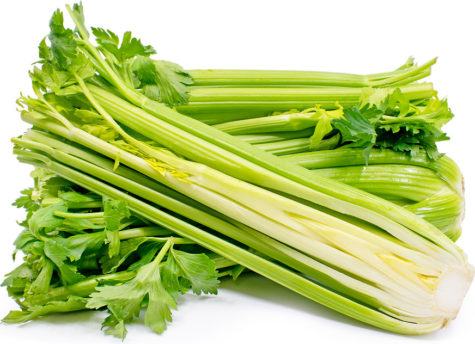
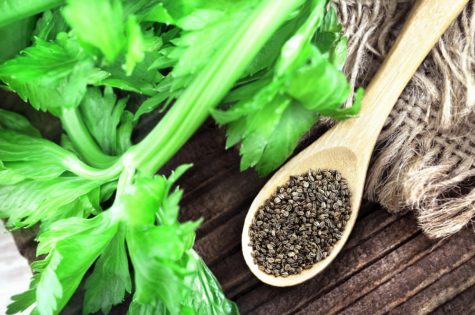
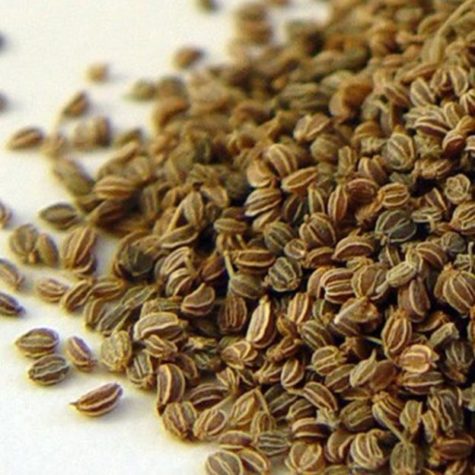

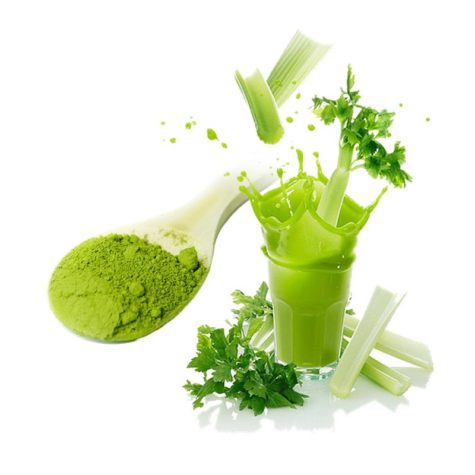
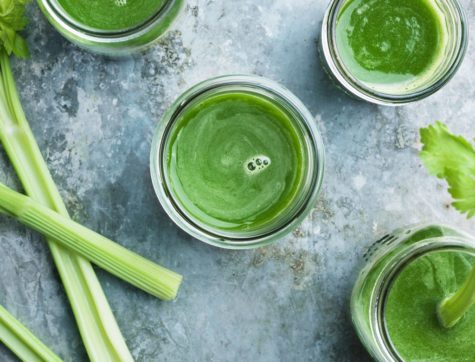
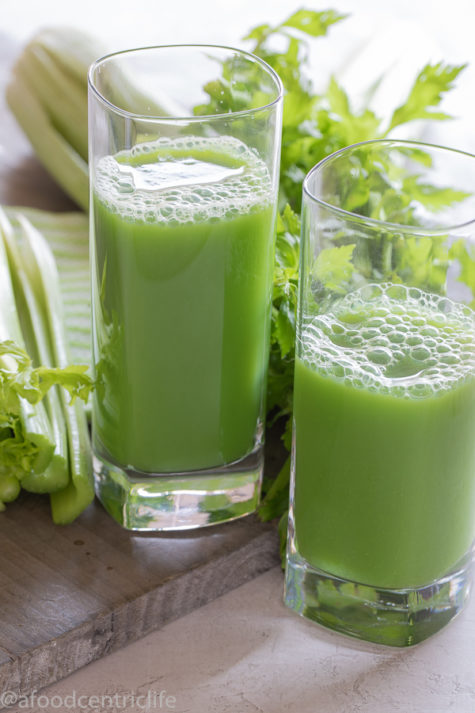
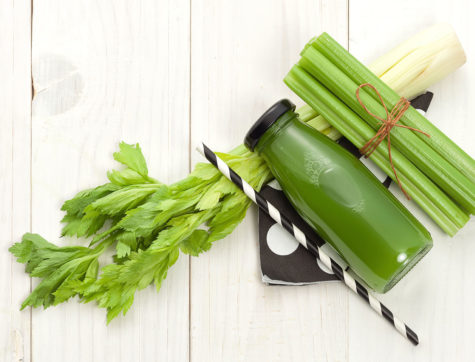
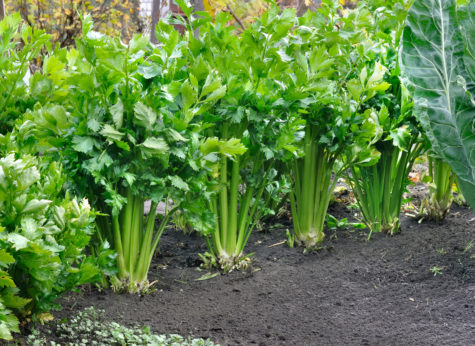
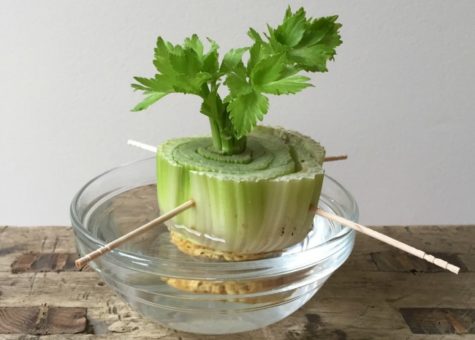
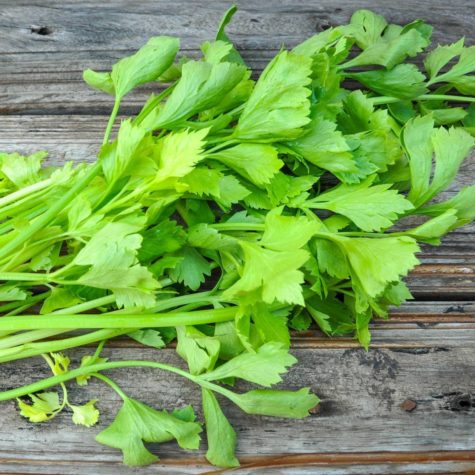
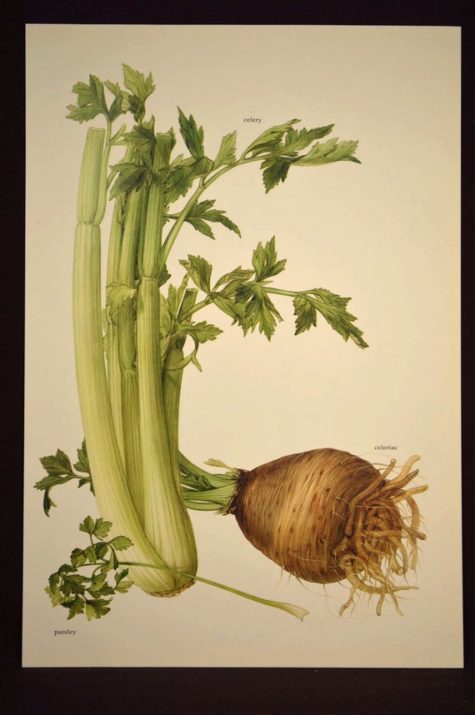


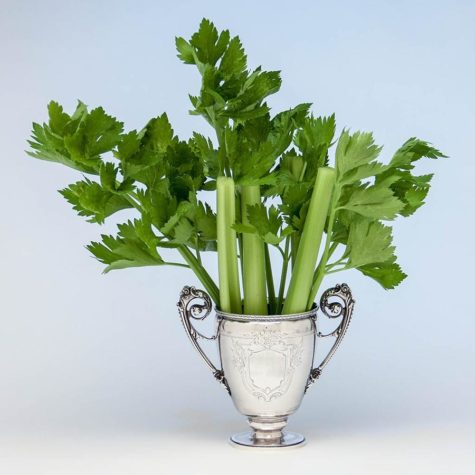
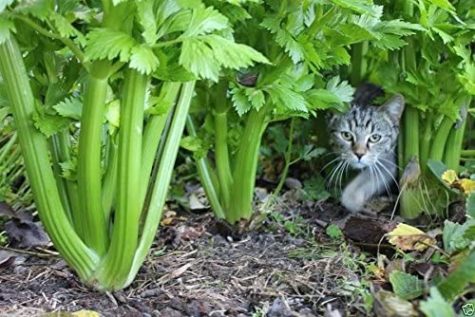

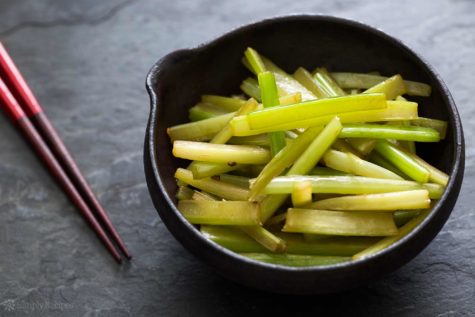
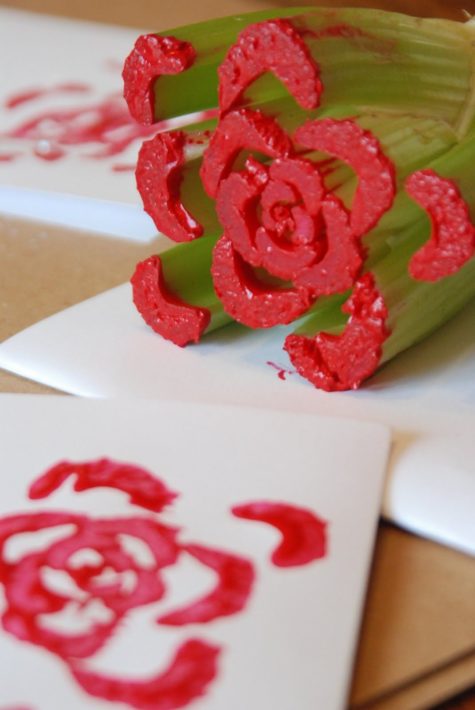

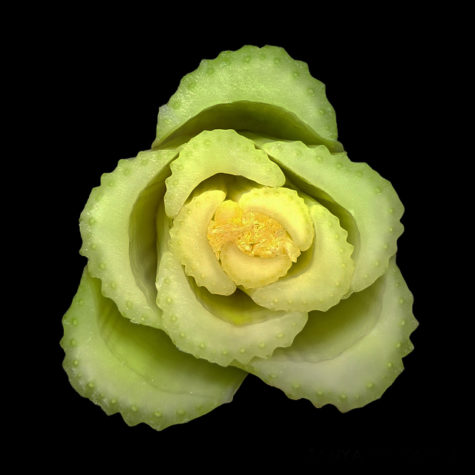


Amazing blog, I’m very happy to read this blog. Basically, I know new many things to read this blog. I strongly believe that the blog delivers the best information to its audience.